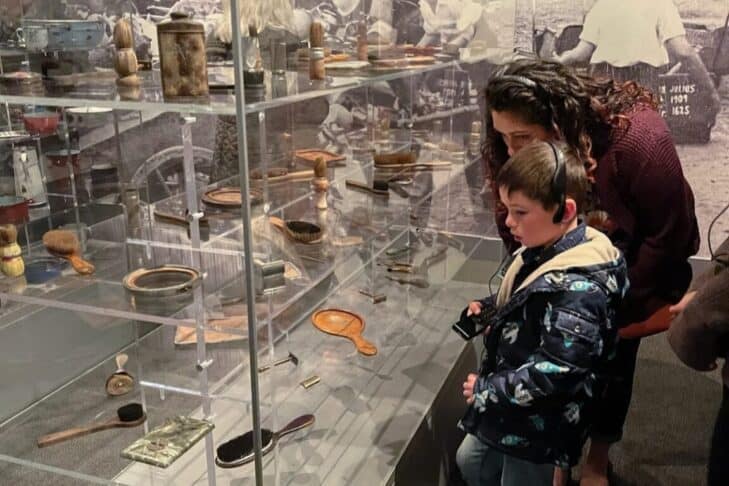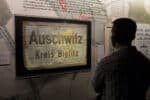Last week, I took my 13-year-old to see the Boston installation of “Auschwitz. Not long ago. Not far away.” I also went with my dad. This was important, since I discovered that my father actually was named for a relative who died in the Holocaust. (Somehow, this hadn’t come up until now. I know; I can’t believe it either.)
Taking a seventh grader to see such a jarring exhibit—thankfully, so far removed from his fairly sheltered, fun-focused daily life—seemed like a bit of a gamble. He’d learned a bit about the Holocaust in school, but not much. On the one hand, I was hoping he’d be moved and ask deep questions, and I worried that I’d be disappointed if he didn’t. Was he selfish? Not interested in the world?
- On the other hand, I didn’t want him to be completely upset. (Although, after seeing such graphic photos of children younger than him at the camps, I quietly berated myself for even worrying about that. He’s a lucky kid.) So I went into it with some uncertainty. If you’re visiting with kids, here are some takeaways.
Plan to spend about three hours. We had tickets for timed entry, and even so, the line snaked around the block, and we waited quite a while to get inside. It’s gratifying that the exhibit is so popular, but just be prepared to leave a buffer. It took us a little over two hours to make our way through each exhibit, but you could easily spend even longer.
It’s quiet. Really quiet. I’ve never been in a museum where it was completely silent. Not even minor conversation; our sneakers echoed with every step. My 13-year-old is pretty quiet anyway (or at least he knows when to be), but if I had a chatty kid, I think I would’ve felt uncomfortable.
Most exhibits have an audio component. Visitors are given an audio device when they arrive and can enter each exhibit number to hear an explanation. This was really helpful for Andy, who is dyslexic. Some exhibits are text-heavy.
There’s not a kid-focused section. The exhibits assume a certain baseline of maturity and knowledge on the part of each viewer; this is not an experience that caters to the visitor, nor should it. There’s no separate area that breaks down these elements for younger kids; you should be comfortable with that.
This is a viewing experience; there aren’t interactive elements. The focus is on words, imagery, video and artifacts. It’s stark, spare, plain and dramatic. This is intentional, but kids shouldn’t expect a multi-sensory experience, either. (Andy is a Snapchat user; this is not a Snapchat or Instagram environment.)
There’s a lot to absorb and process, and kids might not take it all in. The exhibition contains 700 original photographs, 400 objects and video interviews with survivors. I asked Andy what he remembered most, and he said, “The shoes”—children’s shoes, his little brother’s size, from the smallest victims. Something so elemental, so innocent and familiar, made this more real for him. I don’t think he fully grasped the history or the immediacy, but items like those shoes—things like eyeglasses, suitcases, pajamas—were the most memorable parts for him, and might be for your kids, too, because they’re so relatable, such simple aspects of humanity contrasted with anything but.
Overall, Andy seemed stunned, bewildered that this was real, that it happened. As we walked back toward our car, I wondered how long he’d stay so innocent.




